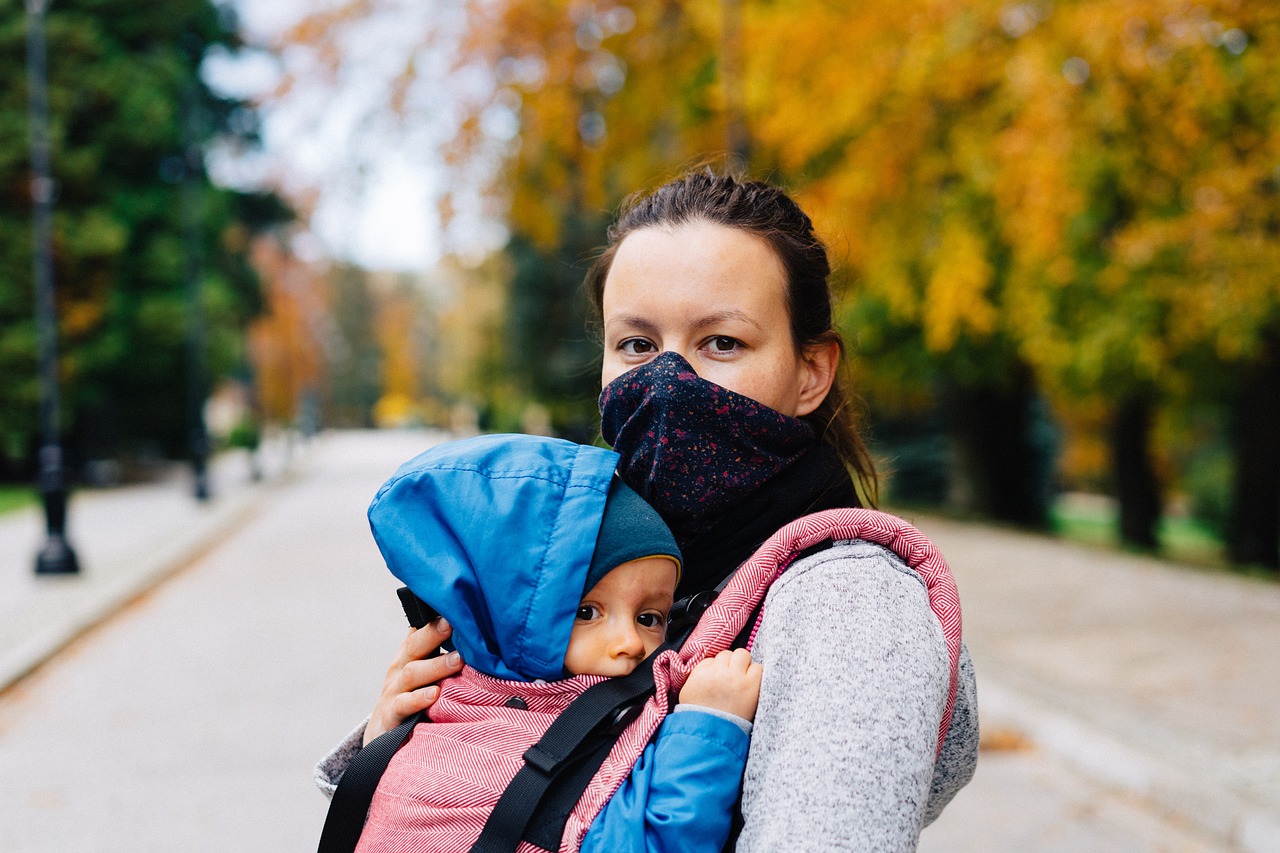How the Study of Human Behavior can Impact Safety Measures
In today's world, where safety is a top priority across various sectors, understanding human behavior has become essential for crafting effective safety measures. It's fascinating to think about how our actions, decisions, and even our reactions in critical situations can significantly influence safety outcomes. Have you ever wondered why people sometimes ignore safety protocols? Or why some individuals seem to freeze in emergencies while others spring into action? These questions highlight the importance of delving into the psychological factors that govern human behavior.
At the heart of safety measures lies the understanding that humans are not just machines that follow instructions. We are complex beings influenced by emotions, perceptions, and social dynamics. This complexity means that safety protocols must be designed with a deep awareness of how individuals and groups behave in various situations. By studying human behavior, we can identify the underlying motivations and fears that drive people to comply—or fail to comply—with safety measures.
Imagine a fire drill in an office building. While some employees may calmly exit the premises, others might panic, leading to chaos. This scenario underscores the need for safety protocols that account for human behavior. If we can predict how individuals will react based on their psychological makeup, we can create more effective training programs and emergency procedures that enhance overall safety.
Moreover, understanding human behavior can help organizations tailor their safety measures to fit the unique needs of their environments. For instance, in high-stress industries like construction or healthcare, where the stakes are incredibly high, a one-size-fits-all approach to safety simply won't cut it. Instead, organizations should consider the specific psychological triggers that may affect their workforce. This could involve implementing behavioral interventions that foster a culture of safety, encouraging employees to actively participate in safety practices rather than viewing them as mere obligations.
As we dive deeper into the relationship between human behavior and safety measures, we will uncover the intricate layers that define our responses to risk and safety protocols. By leveraging insights from behavioral psychology, we can enhance our understanding of how to protect not just our physical spaces, but also the people within them. So, let's explore how these psychological factors play out in real-world scenarios and what we can learn from them.

The Importance of Human Behavior in Safety
Understanding human behavior is crucial for developing effective safety measures across various environments, whether in workplaces, public spaces, or homes. It's fascinating how our actions and decisions can significantly influence not just our safety but also that of those around us. Have you ever wondered why some people follow safety protocols diligently while others seem to ignore them completely? The answer often lies in the intricate web of psychological factors that govern our behavior.
At the core of safety protocols is the concept of decision-making. Each day, individuals are faced with choices that can either enhance their safety or put them at risk. For instance, when a fire alarm goes off, some people may react quickly and evacuate, while others might hesitate, questioning the alarm's validity. This difference in response can stem from various influences, including past experiences, social pressure, and even personal beliefs about risk. Understanding these factors allows safety professionals to tailor their protocols to better align with how people actually behave in real-life situations.
Moreover, risk assessment plays a pivotal role in how individuals gauge their safety. People often misjudge risks based on their perceptions and experiences. For example, someone who has never encountered a dangerous situation may underestimate the severity of a potential hazard. On the other hand, someone who has experienced a traumatic event may overreact to similar situations. This discrepancy highlights the need for safety measures that not only address the objective risks but also consider how individuals perceive those risks.
Incorporating insights from behavioral psychology can lead to more effective safety measures. By understanding the psychological triggers that influence behavior, organizations can create environments that promote safe practices. For instance, visual reminders, such as signage and training materials, can be strategically placed to reinforce the importance of safety protocols. Furthermore, engaging employees in discussions about safety can foster a culture where safety is prioritized, ultimately leading to better compliance and reduced incidents.
In summary, the importance of human behavior in safety cannot be overstated. By examining how individuals make decisions and perceive risks, we can develop safety measures that resonate with their natural inclinations. This understanding not only saves lives but also cultivates a safer environment for everyone involved. So, the next time you think about safety, remember that it's not just about the rules; it's about the people who follow them.

Behavioral Psychology and Safety Protocols
Behavioral psychology is a fascinating field that delves into how our thoughts, emotions, and behaviors intertwine, especially in high-stress situations. When it comes to safety protocols, understanding these psychological principles can make a significant difference. Imagine a firefighter, racing into a blazing building. Their reactions, decisions, and adherence to safety measures are not just instinctual; they are shaped by their training and psychological conditioning. This connection between behavior and safety is crucial for developing effective protocols that can save lives.
One of the key theories in behavioral psychology is the theory of planned behavior, which suggests that our intentions, influenced by attitudes and social norms, predict our actions. In safety contexts, this means that if individuals believe that following safety protocols is important and see their peers doing the same, they are more likely to comply. For instance, in a workplace setting, if employees observe their colleagues regularly using protective equipment, they are more inclined to do so themselves. This creates a culture of safety that can significantly reduce accidents.
Moreover, the concept of cognitive dissonance plays a vital role in how people adhere to safety protocols. When individuals recognize a gap between their actions and their beliefs—such as knowing they should wear a helmet but not doing so—they experience discomfort. This discomfort can motivate them to change their behavior to align with their beliefs. Safety training programs that highlight the consequences of non-compliance can leverage this psychological principle to encourage better adherence to safety measures.
To further illustrate how behavioral psychology informs safety protocols, consider the role of perception. How we perceive risk can drastically alter our behavior in emergency situations. For instance, someone who perceives a fire alarm as a false alarm may ignore it, putting themselves and others at risk. Conversely, someone who has been trained to recognize the sound of a fire alarm as an immediate danger is more likely to take swift action. This highlights the importance of effective training programs that not only teach safety protocols but also shape how individuals perceive risks.
Training methods can utilize various techniques grounded in behavioral psychology. For example, simulation training can help individuals practice their responses to emergencies in a controlled environment, enhancing their ability to react appropriately when a real crisis occurs. By immersing individuals in realistic scenarios, they can develop the necessary skills and confidence to follow safety protocols under pressure.
Additionally, stress management techniques are essential in improving decision-making during emergencies. High-stress situations can cloud judgment, leading to poor choices that may compromise safety. By incorporating stress management strategies into training programs, organizations can equip their employees with tools to remain calm and focused. Techniques such as deep breathing, visualization, and mindfulness can help individuals manage their stress levels, ultimately leading to better adherence to safety protocols.
In summary, the intersection of behavioral psychology and safety protocols is a rich area of study that holds the key to enhancing safety measures across various environments. By understanding how psychological factors influence behavior, organizations can develop more effective training programs, improve compliance with safety measures, and ultimately create safer workplaces and communities.

The Role of Perception in Safety
When it comes to safety, perception is everything. Imagine walking into a room filled with fire alarms. If you perceive them as mere decorations, you’re likely to ignore them. However, if you recognize their importance, you’re more inclined to respond appropriately in an emergency. This illustrates a critical point: how we perceive our environment directly influences our responses to safety measures.
Perception shapes our understanding of risk and safety protocols. For example, a person who perceives a workplace as hazardous will likely adhere more closely to safety measures compared to someone who views it as completely safe. This discrepancy can lead to significant differences in behavior during emergencies. Understanding these nuances is essential for organizations aiming to enhance their safety protocols.
To delve deeper, let’s consider the factors that influence perception in safety contexts:
- Past Experiences: Individuals with previous experiences of accidents or near-misses are more likely to perceive risks accurately and take safety measures seriously.
- Training and Education: Proper training can significantly alter perceptions. When employees are educated about potential hazards, they are more likely to recognize and react appropriately to them.
- Environment: The physical environment itself can influence perception. A cluttered workspace may be perceived as more dangerous than a well-organized one, impacting how safety measures are viewed and followed.
Moreover, social influences play a pivotal role in shaping our perceptions. If a group of peers disregards safety protocols, an individual may also choose to ignore them, believing that their perception is the norm. On the flip side, if everyone around them is vigilant, they are more likely to adopt that behavior. This phenomenon highlights the importance of fostering a culture of safety within organizations.
In emergency situations, perception can be a double-edged sword. For instance, if an individual perceives a threat as imminent, they may react quickly and effectively. However, if they underestimate the danger, their response may be delayed or inadequate. This is why it’s crucial to not only implement safety measures but also to ensure that individuals understand and perceive their importance. Regular drills and clear communication can help reinforce this perception.
In conclusion, the role of perception in safety cannot be overstated. It is a fundamental element that influences how individuals assess risks and respond to safety protocols. By understanding and addressing the factors that shape perception, organizations can create a safer environment for everyone. In doing so, they not only protect their employees but also cultivate a culture of safety that prioritizes awareness and proactive behavior.

Influence of Training on Behavior
Training plays a pivotal role in shaping how individuals respond to safety protocols. Think of it as a well-tuned instrument: without proper training, the notes can sound off-key, leading to misunderstandings and potential hazards. When people are equipped with the right knowledge and skills, they are more likely to adhere to safety measures effectively. This is particularly crucial in high-stakes environments like construction sites, hospitals, and laboratories, where the consequences of unsafe behavior can be dire.
One of the key aspects of training is its ability to enhance awareness and perception. Participants who undergo rigorous safety training often develop a heightened sense of vigilance. They learn to recognize potential hazards and understand the importance of following protocols. For instance, consider a fire drill: when employees practice evacuating a building, they not only memorize the exit routes but also internalize the urgency of the situation. This kind of training instills a sense of responsibility that can be life-saving in real emergencies.
Moreover, effective training programs often incorporate real-life scenarios to engage participants actively. By simulating emergencies, trainers can create a realistic environment where individuals can practice their responses. This hands-on approach not only builds confidence but also reinforces the appropriate behaviors expected during an actual crisis. For example, a medical facility might conduct mock code blue scenarios, allowing staff to practice their roles in a controlled setting. Such experiences can drastically improve reaction times and decision-making skills when it matters most.
Another significant influence of training on behavior is the development of a safety culture. When organizations prioritize training and make it a core part of their operational framework, they foster an environment where safety is valued. Employees are more likely to engage in safe practices and encourage their peers to do the same. This collective commitment can be transformative, as it leads to a proactive approach to safety rather than a reactive one. In essence, training becomes a catalyst for change, promoting a mindset where safety is everyone's responsibility.
However, it's essential to recognize that not all training programs are created equal. The effectiveness of training often hinges on factors such as delivery methods, relevance, and frequency. For instance, a one-time training session may not suffice in keeping safety protocols top of mind. Regular refresher courses and updates on new safety measures can ensure that employees remain informed and engaged. Additionally, employing various training methods—such as e-learning, hands-on workshops, and group discussions—can cater to different learning styles and enhance retention.
In summary, the influence of training on behavior cannot be overstated. It serves as the foundation for a safer workplace by equipping individuals with the necessary skills and knowledge to act appropriately in various situations. By investing in comprehensive training programs, organizations can significantly reduce the likelihood of accidents and foster a culture of safety that benefits everyone involved.
- What types of training are most effective for safety? Training that includes hands-on practice, real-life scenarios, and regular refreshers tends to be most effective.
- How often should safety training be conducted? Regular training sessions, ideally every six months to a year, help keep safety protocols fresh in employees' minds.
- Can training change behavior? Yes, effective training can significantly change how individuals perceive risks and respond to safety measures.
- What role does leadership play in safety training? Leadership sets the tone for safety culture; their commitment to training can inspire employees to prioritize safety.

Impact of Stress on Decision-Making
Stress is an omnipresent element in our lives, especially in high-stakes situations where safety is a concern. When faced with stressful circumstances, our brains undergo significant changes that can impair our decision-making abilities. Imagine being in a car accident; your heart races, your palms sweat, and suddenly, the world around you seems to blur. This is not just a dramatic scenario—it's a physiological response that can lead to poor choices in critical moments. The impact of stress on decision-making can be profound, affecting how individuals assess risks and respond to safety protocols.
Under stress, the brain's ability to process information diminishes. Research shows that the prefrontal cortex, which is responsible for rational thought and decision-making, can become less effective. Instead, the brain may revert to more instinctual responses, often driven by fear or panic. This can lead to a range of outcomes, from misjudging a situation to completely freezing up when action is required. For example, during a fire alarm, a person might hesitate to evacuate due to confusion or panic, which can have dire consequences.
To illustrate this further, consider a workplace scenario where an employee is faced with an emergency. If they are overwhelmed by stress, they may forget the safety protocols they were trained on. Instead of following the exit plan, they might try to gather their belongings or assist others, delaying their escape. This highlights the importance of not only training individuals in safety measures but also preparing them to manage stress effectively.
One effective way to mitigate the effects of stress on decision-making is through stress management techniques. These can include:
- Meditation and Mindfulness: Practicing mindfulness can help individuals stay calm and focused, even in stressful situations.
- Scenario-Based Training: Regularly engaging in drills that simulate high-stress scenarios can prepare individuals to react more effectively.
- Breathing Techniques: Simple breathing exercises can help lower stress levels and improve cognitive function during emergencies.
By implementing these techniques, organizations can enhance the ability of their employees to make sound decisions under pressure. It's essential to recognize that stress is not merely an inconvenience; it can significantly alter the trajectory of safety outcomes.
In conclusion, understanding the impact of stress on decision-making is crucial for developing effective safety measures. By equipping individuals with the tools to manage stress, we can foster a culture of safety that prioritizes informed decision-making, even in the most challenging circumstances. As we continue to study the interplay between human behavior and safety, it becomes clear that addressing the psychological aspects of stress is just as important as the physical protocols in place.

Group Dynamics and Safety Compliance
When it comes to safety compliance, the influence of group dynamics can't be overstated. Imagine a workplace where everyone feels responsible for each other's safety; this creates a culture of compliance that can significantly reduce accidents and mishaps. But what happens when individuals prioritize group norms over safety protocols? This is where the intricate dance of human behavior becomes crucial. In many cases, individuals may feel pressured to conform to the group's actions, even if those actions are not the safest choices. This phenomenon can lead to a dangerous cycle where safety measures are overlooked simply to maintain group cohesion.
Research shows that people often look to their peers when making decisions, especially in high-stakes environments. When a group collectively downplays risks, individual members might follow suit, believing that their safety is ensured by the group's consensus. This is particularly evident in emergency situations, where the fear of being the odd one out can lead to poor decision-making. For example, during a fire drill, if the majority of the group remains seated instead of evacuating, others may hesitate to leave, thinking, "If they’re not worried, why should I be?"
To combat this, organizations need to foster an environment where open communication is encouraged. When team members feel safe to voice their concerns, it can lead to a more vigilant and compliant group. Implementing regular safety briefings can serve as a reminder of the protocols in place and promote a culture of accountability. Consider a scenario where a team leader actively solicits feedback on safety procedures. This not only empowers individuals but also reinforces the idea that safety is a shared responsibility.
Moreover, understanding the social dynamics at play can help organizations tailor their safety initiatives effectively. For instance, a team that has built strong relationships may naturally hold each other accountable for following safety measures. In contrast, a group with less cohesion might struggle with compliance. Therefore, investing in team-building activities can be a strategic way to enhance safety compliance. These activities can help build trust and camaraderie, which are essential for a proactive safety culture.
In summary, the interplay of group dynamics and safety compliance is a complex yet vital aspect of workplace safety. Organizations that recognize the importance of social influences and actively work to promote open dialogue and team cohesion will likely see significant improvements in compliance rates. By fostering a culture where safety is everyone's responsibility, the risk of accidents can be minimized, creating a safer environment for all.
- What are group dynamics? Group dynamics refer to the behavioral and psychological processes that occur within a social group. They influence how members interact, make decisions, and comply with safety measures.
- How do group dynamics affect safety compliance? Group dynamics can lead to conformity, where individuals prioritize group norms over safety protocols, potentially resulting in unsafe behaviors.
- What can organizations do to improve safety compliance? Organizations can encourage open communication, conduct regular safety briefings, and foster team cohesion through team-building activities.

Case Studies in Human Behavior and Safety
The relationship between human behavior and safety measures is not just a theoretical concept; it is a reality that can be observed through various case studies. These real-world examples provide valuable insights into how understanding human actions can lead to improved safety protocols. Take, for instance, the infamous Challenger Space Shuttle disaster. This tragic event was not solely due to mechanical failure but was significantly influenced by the decision-making processes and communication failures among the engineers and management. The pressure to launch, combined with the engineers’ concerns about the O-rings in cold weather, created a situation where human behavior directly impacted safety outcomes.
Another notable case is the 2010 Deepwater Horizon oil spill. Investigations revealed that a series of human errors and misjudgments contributed to this catastrophic event. The crew's underestimation of the risks involved, along with a failure to adhere to safety protocols, led to one of the worst environmental disasters in history. These incidents highlight the importance of understanding human behavior in safety contexts; they teach us that protocols must not only be in place but also be followed, and this adherence is often dictated by human factors.
Moreover, the airline industry has long been a pioneer in studying human behavior to enhance safety. Techniques such as Crew Resource Management (CRM) have been developed to improve communication and decision-making among flight crews. For example, during a simulated emergency, crews trained in CRM showed significantly better performance in managing the situation compared to those who had not received such training. This underscores the idea that effective training can alter behavior in critical situations, ultimately leading to better safety outcomes.
To further illustrate the impact of human behavior on safety measures, we can look at a table summarizing key case studies:
| Case Study | Key Findings | Lessons Learned |
|---|---|---|
| Challenger Disaster | Communication breakdown and pressure to launch | Importance of voicing concerns and decision-making transparency |
| Deepwater Horizon | Human errors and risk misjudgment | Need for strict adherence to safety protocols |
| Airline CRM Training | Improved communication and decision-making | Effective training can enhance safety performance |
These case studies illustrate a crucial point: safety measures are only as effective as the human behaviors that support them. By recognizing the psychological factors at play, organizations can develop more effective training programs, communication strategies, and protocols that take into account the complexities of human behavior. Whether it’s in aviation, space exploration, or industrial settings, the lessons learned from these incidents are invaluable in shaping the future of safety practices.
- What is the impact of human behavior on safety measures?
Human behavior significantly influences how safety protocols are followed and how risks are assessed. Understanding these behaviors can lead to improved safety outcomes.
- Can training improve safety compliance?
Yes, effective training can shape perceptions and responses to safety protocols, leading to better compliance and decision-making during emergencies.
- What role does stress play in decision-making?
Stress can impair decision-making abilities, especially in emergencies. Managing stress through techniques can enhance safety outcomes.

Success Stories in Behavioral Interventions
When we talk about behavioral interventions in safety protocols, it's not just about rules and regulations; it's about understanding the human element that drives compliance and safety. One of the most compelling success stories comes from the aviation industry, where behavioral psychology has transformed safety practices. For instance, the implementation of Crew Resource Management (CRM) training revolutionized how flight crews communicate and work together. By focusing on interpersonal skills, decision-making, and situational awareness, CRM has significantly reduced human error in aviation, leading to safer flights.
Another notable success can be seen in the construction industry, where safety interventions have drastically improved outcomes. Companies have adopted a behavioral-based safety (BBS) approach, which emphasizes positive reinforcement. Workers are encouraged to report unsafe behaviors and practices, and in return, they receive recognition for their proactive measures. This shift in focus from punitive measures to positive reinforcement has fostered a culture of safety, leading to a remarkable decline in workplace accidents. According to a study, companies that implemented BBS saw a reduction in incident rates by up to 50% within just a year!
Moreover, in healthcare settings, the use of behavioral interventions has proven effective in reducing hospital-acquired infections. For example, hospitals that adopted the “Five Moments for Hand Hygiene” approach saw a significant increase in compliance with handwashing protocols. By framing hand hygiene as a critical part of patient safety and using visual reminders, healthcare professionals became more aware of their actions. The result? A documented decrease in infection rates by as much as 30% in some facilities.
These examples highlight a crucial point: when we understand the psychology behind human behavior, we can create interventions that not only encourage compliance but also foster a genuine culture of safety. By leveraging insights from behavioral psychology, organizations can tailor their safety measures to align with how people think, feel, and act in real-world situations.
In summary, the success stories in behavioral interventions show us that when safety protocols are designed with an understanding of human behavior, the outcomes can be transformative. Whether it's in aviation, construction, or healthcare, these interventions not only save lives but also create environments where safety is a shared responsibility. As we continue to explore and implement these strategies, we pave the way for even safer practices across various industries.
- What are behavioral interventions? Behavioral interventions are strategies designed to change specific behaviors in individuals or groups to improve safety and compliance.
- How do behavioral interventions improve safety? By understanding the psychological factors that influence behavior, organizations can tailor their safety measures to encourage compliance and reduce human error.
- Can you provide examples of successful behavioral interventions? Yes, successful examples include Crew Resource Management in aviation and the Five Moments for Hand Hygiene in healthcare.
- What industries benefit from behavioral interventions? Many industries, including aviation, healthcare, construction, and manufacturing, have successfully implemented behavioral interventions to enhance safety.

Failures and Lessons Learned
When it comes to safety protocols, the phrase “failure is not an option” often echoes in the minds of those responsible for implementing these measures. However, the reality is that failures do happen, and they can be quite revealing. Each incident offers a unique opportunity to learn and improve future safety measures. For instance, consider the infamous Challenger Space Shuttle disaster in 1986. Engineers had raised concerns about the O-rings failing in cold temperatures, but the decision-makers opted to proceed with the launch. This tragic incident underscored the importance of listening to frontline workers and integrating their insights into safety protocols.
Another notable example is the Deepwater Horizon oil spill in 2010. This catastrophic event was not just a failure of technology; it was a failure of human behavior and decision-making under pressure. The analysis revealed that a series of poor choices, influenced by a culture of risk-taking and inadequate safety practices, led to one of the worst environmental disasters in history. These incidents remind us that human behavior is often the weak link in the safety chain, and when it fails, the consequences can be devastating.
To truly grasp the lessons learned from these failures, we must examine the underlying factors that contributed to them. Here are some critical lessons:
- Prioritize Communication: Open lines of communication between all levels of staff are essential. When employees feel comfortable sharing their concerns, it can prevent potential disasters.
- Value Frontline Insights: Those who work directly with safety measures often have the most valuable insights. Their experiences should inform protocol development.
- Integrate Behavioral Psychology: Understanding how stress, group dynamics, and perception influence behavior can help create more effective safety protocols.
Moreover, it’s crucial to foster a culture of safety where mistakes are viewed as learning opportunities rather than just failures. This shift in perspective can lead to more robust safety measures and a proactive approach to risk management. Organizations should implement regular training sessions that not only cover safety protocols but also delve into the psychological aspects of decision-making and behavior under stress.
In conclusion, the failures in safety protocols serve as stark reminders of the complexities involved in human behavior. By analyzing past incidents, organizations can glean invaluable lessons that not only enhance safety measures but also cultivate a culture of continuous improvement. Remember, it's not just about having protocols in place; it's about ensuring that every individual understands their role and the importance of their actions in maintaining safety.
- What are some common reasons for failures in safety protocols?
Failures often stem from poor communication, lack of training, and failure to consider human behavior in decision-making processes. - How can organizations improve their safety measures?
By fostering open communication, valuing frontline insights, and integrating behavioral psychology into training and protocols. - Why is understanding human behavior important for safety?
Human behavior directly influences decision-making and risk assessment, which are critical components of effective safety measures.
Frequently Asked Questions
- How does human behavior influence safety measures?
Human behavior plays a pivotal role in safety measures as it directly affects decision-making and risk assessment. When we understand how people react in various situations, especially during emergencies, we can design safety protocols that align with their natural instincts and behaviors. This understanding helps in creating more effective and intuitive safety measures.
- What is the significance of behavioral psychology in safety protocols?
Behavioral psychology provides valuable insights into how individuals respond to potentially dangerous situations. By studying these responses, safety protocols can be developed that not only address the physical aspects of safety but also consider the psychological factors that influence behavior. This ensures that safety measures are not only practical but also psychologically sound.
- How does perception affect risk assessment?
Perception plays a critical role in how individuals assess risks. It can significantly alter one’s response to safety measures and emergencies. For instance, if someone perceives a situation as less dangerous than it is, they may not adhere to safety protocols. Understanding this can help in crafting communication strategies that enhance risk perception and compliance with safety measures.
- In what ways can training influence safety behavior?
Training is essential as it shapes perceptions and responses to safety protocols. Effective training methods can instill a sense of preparedness and confidence in individuals, making them more likely to comply with safety measures. By simulating real-life scenarios during training, individuals can better understand the importance of safety protocols and how to respond appropriately in emergencies.
- What impact does stress have on decision-making in emergencies?
Stress can severely impair decision-making abilities during emergencies. High-stress situations often lead to panic and poor judgment. Implementing stress management techniques can improve safety outcomes by helping individuals maintain clarity and focus during critical moments. By preparing individuals to handle stress, we can enhance their ability to follow safety protocols effectively.
- How do group dynamics affect compliance with safety measures?
Group behavior can significantly influence individual compliance with safety measures. People often look to their peers for cues on how to act, which means that a positive safety culture within a group can enhance adherence to protocols. Conversely, if the group demonstrates non-compliance, individuals may feel less inclined to follow safety measures, highlighting the importance of fostering a supportive safety environment.
- Can you provide examples of successful behavioral interventions?
Yes! There are numerous success stories where behavioral interventions have led to improved safety outcomes. For instance, implementing a reward system for safe behavior in workplaces has been shown to increase compliance with safety protocols. These interventions not only encourage adherence but also create a culture of safety that benefits everyone involved.
- What can we learn from failures in safety protocols?
Examining failures in safety protocols reveals critical lessons that can enhance future safety measures. By analyzing incidents where human behavior led to breaches, organizations can identify gaps in their protocols and training. This reflective practice is essential for continuous improvement and helps prevent similar incidents from occurring in the future.



















